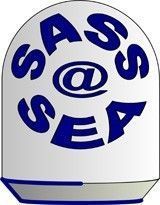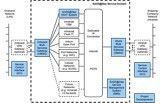
-
StatusCompleted
-
Status date2014-11-17
The overall objective of the SASS@Sea project was the development and validation of a system for the provisioning of an integrated maritime communications service. The system will support the following features:
- Provisioning of Committed Information Rate (CIR) at fleet level and bandwidth on-demand at application level,
- Store & forward transfer of high data volumes during off-peak traffic periods,
- “Occasional Use” bandwidth on-demand service for non-routine or emergency applications,
- Transparently switching between different maritime networks,
- Intelligent switching between satellite beams,
- Open system architecture enabling the integration of future maritime networks (future proof).
The scope of development includes:
- An Onboard Multi Services Gateway (OMSG) for vessels providing connectivity to all relevant maritime communications services including a high performance VSAT system,
- A Shore Multi Services Gateway (SMSG) for shipping companies,
- A Service Management System (SMS) supporting advanced bandwidth management and VSAT beam switching functionality.
The SASS@Sea multi services gateways in conjunction with the Service Management System are designed as a service platform which is open to integrate different, also future networks.
The project developments were evaluated during a four months pilot phase by tanker vessels operating in the North Atlantic, US East Coast and Baltic Sea regions.
The project is addressing the following issues with current maritime VSAT services:
- Low quality-of-service of shared services,
- High charges of services offering Committed Information Rates,
- Complexity of onboard LAN-, VSAT- and alternative networks (e.g. Inmarsat, Iridium) integration,
- Unreliable satellite and wireless network switching solutions,
- Ureliable and inflexible satellite beam switching solutions,
- Complexity of onboard VSAT system operation.
The SASS@Sea system provides the following benefits with respect to the above mentioned issues:
- Guaranteed Quality-of-Service with 5 traffic priority levels adapted to ship-to-shore communications applications,
- Lower service charges due to more efficient bandwidth utilisation by central bandwidth management and support of store&forward mode,
- Integrated (one stop shop), easy-to-use onboard VSAT system solution supporting transparent switching of the user traffic between the different communications systems without the need to change the IP configuration within the user LAN,
- Intelligent switching of the VSAT connection between satellite beams not only based on the ship position, but also taking into account antenna pointing restrictions, bandwidth availability and avoiding the termination of running high priority connections.
The following diagram shows the high level architecture of the SASS@Sea system. The subsystems and components which are developed by the SASS@Sea project are highlighted in blue.
The SASS@Sea service is providing two-way IP connections between ships at sea and the shipping companies at shore. Direct connectivity to the Internet and public telephone networks (PSTN) is also supported.
The service is based on a high performance VSAT component. The main functionality of the Onboard and Shore Multi Services Gateways is to identify and classify the ship and shore originated application traffic and to control the transmission via the VSAT system according to bandwidth assignments imposed by the Service Management System.
When the ships are outside of the VSAT coverage, the user traffic is switched to alternative maritime satellite systems like Inmarsat or Iridium. Within coastal areas or in ports, 3G/4G mobile networks or WiFi hot spots can also be used. The OMSG and SMSG are routing the traffic transparently via the different networks depending on availability and user defined preferences.
The Service Management System is managing the bandwidth within the VSAT system and is assigning and re-assigning bandwidth to the application traffic on-demand using IP based signalling protocols. It will supports advanced beam switching functionality in conjunction with the OMSG onboard of the vessels, not only depending on the vessel position, but also on other criteria such as heading (antenna blocking) and bandwidth utilisation in the different beams.
Unlike other existing maritime VSAT systems the service management mechanisms is independent of the two-way satellite IP platform used. This architecture enables the integration of future networks such as the Inmarsat Global Xpress satellite system into the SASS@Sea service platform.
In parallel, the business plan for worldwide operation of the SASS@Sea system was finalised. The aim was to migrate the pilot service seamlessly to commercial operation after the end of the project in the first quarter 2014.
The project was completed successfully end of 2013. The operation is being continued for beta testing with the pilot user and other friendly users. Subject to the results, the roll-out of the fully operational service is planned until mid of 2014.




